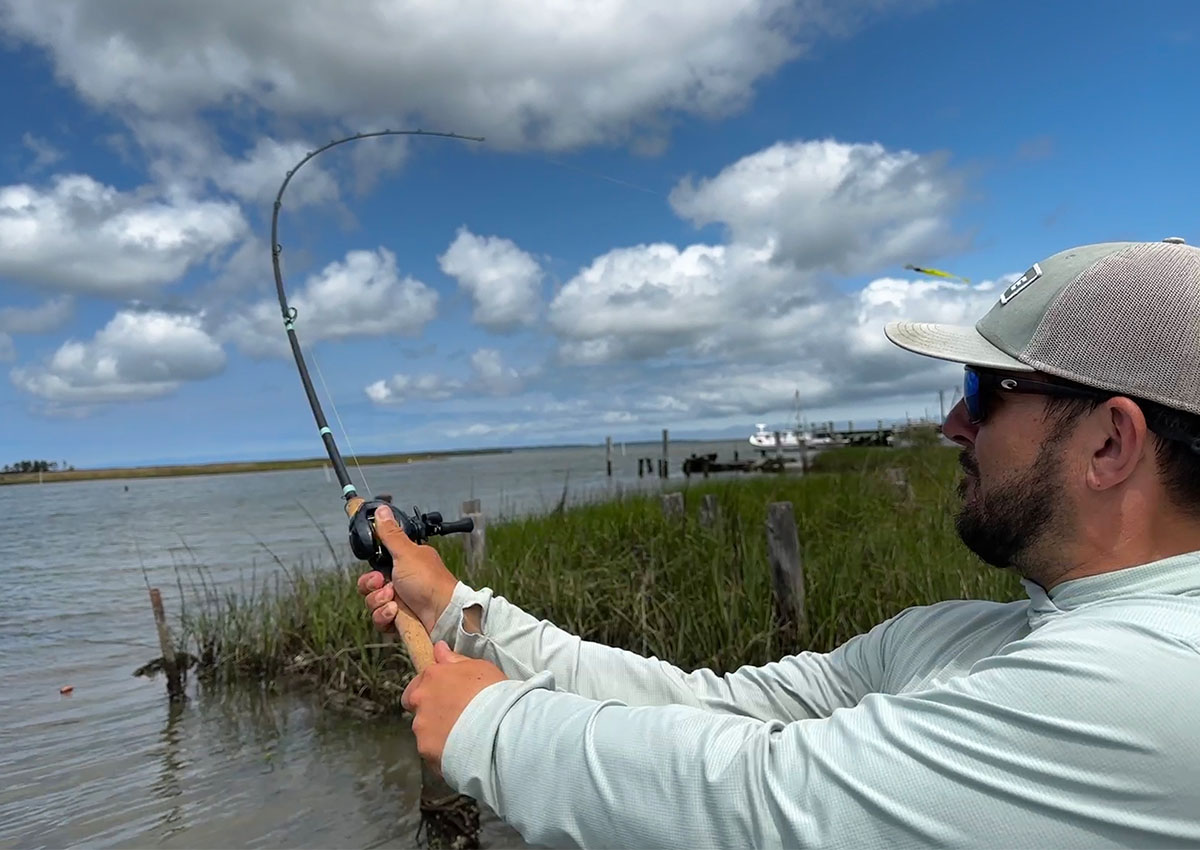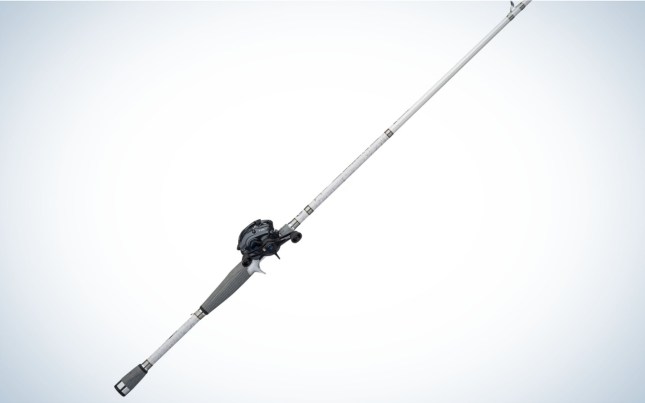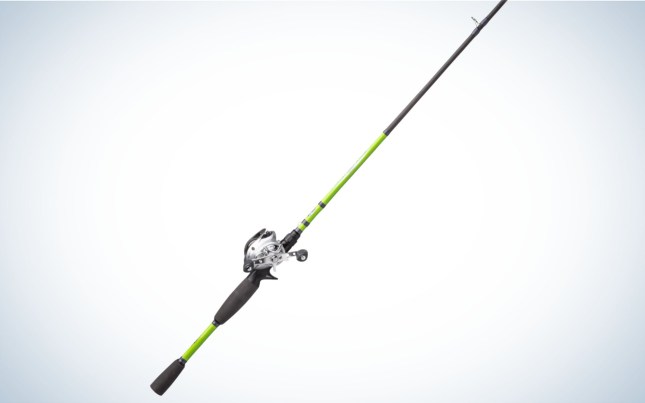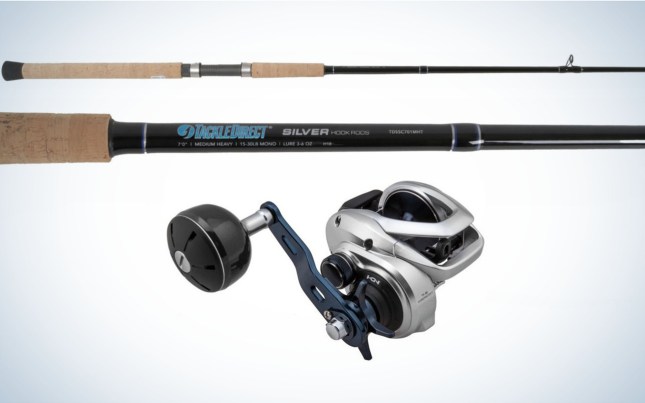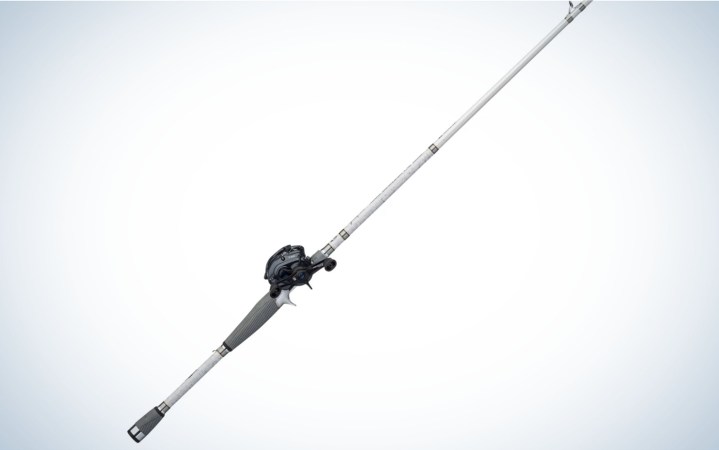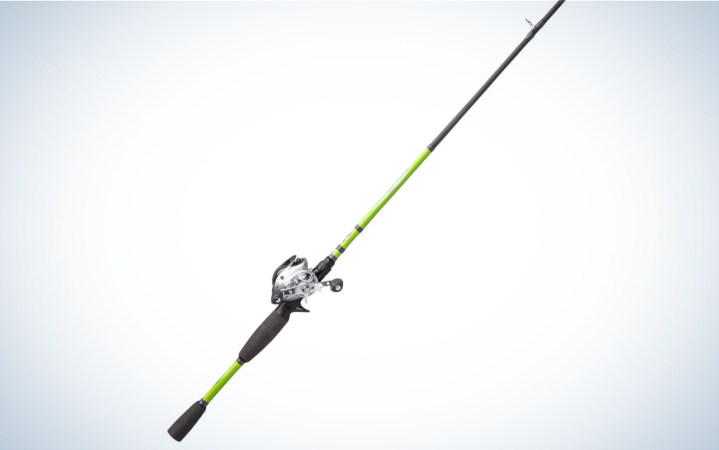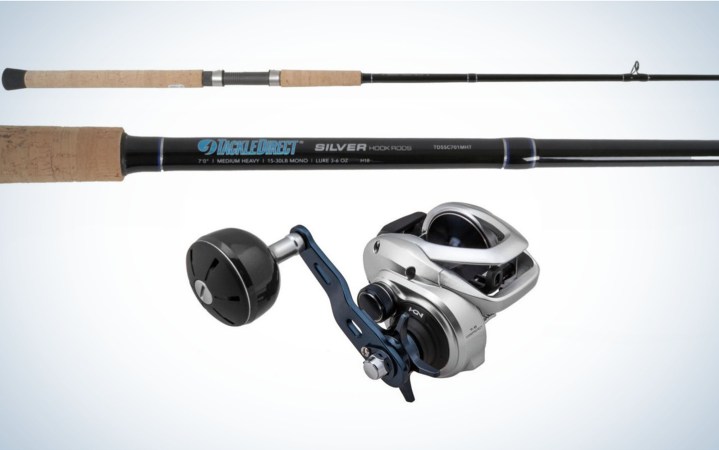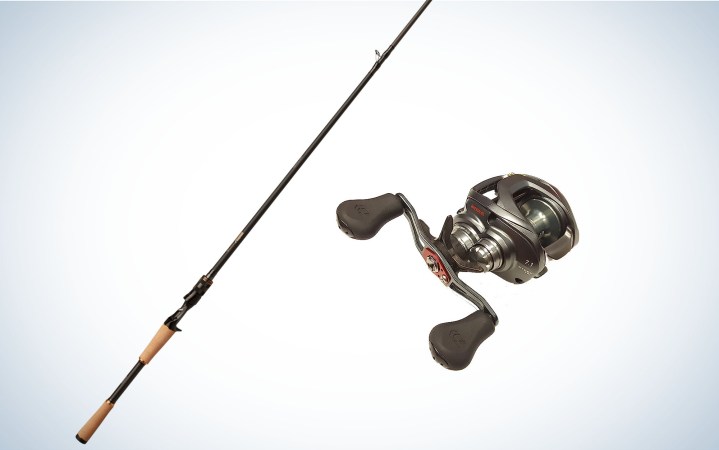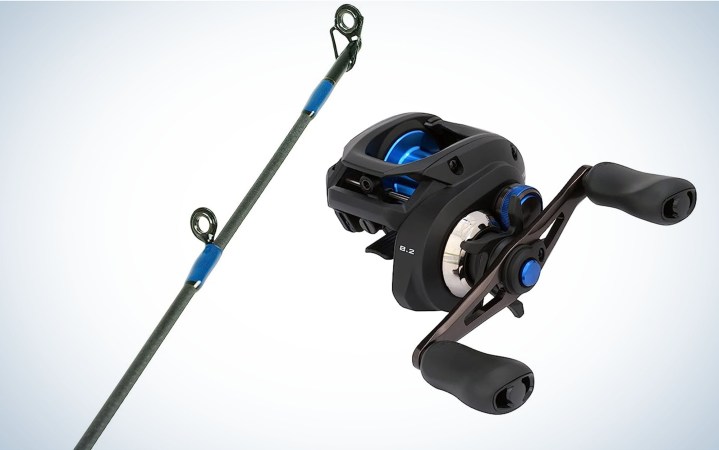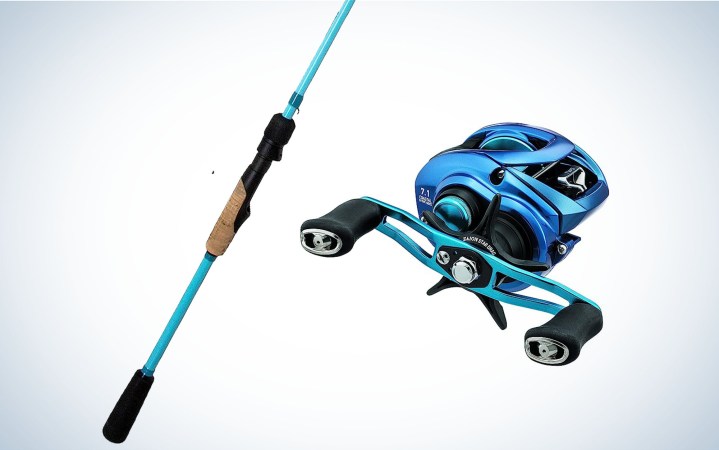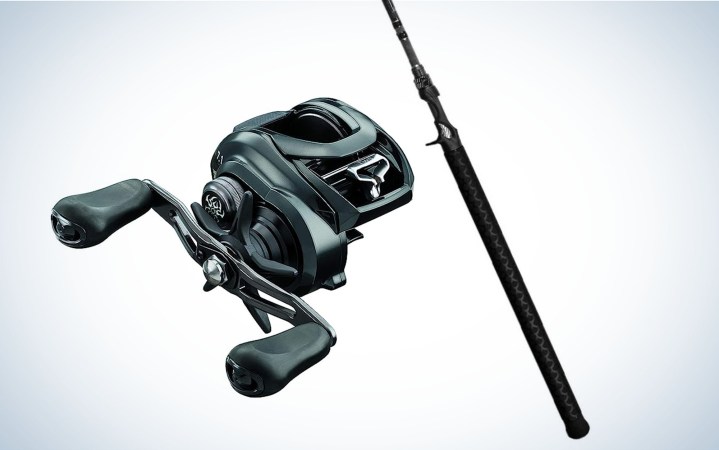We may earn revenue from the products available on this page and participate in affiliate programs. Learn More ›
Baitcaster combos offer anglers more value than they can get from buying a rod and reel separately. They also simplify the process of matching the right reel with a rod. If you’re in the market for fresh or saltwater combos, here are some of the best baitcaster combos available.
- Best Overall: Daiwa Tatula CT/Bass Pro Shops Johnny Morris Carbonlite 2.0 Baitcast Combo
- Best Budget Combo for Bass: Bass Pro Shops Tourney Special
- Best Saltwater Combo: TackleDirect TDSSC701MHT Silver Hook/Shimano TRX300AHG TranX Baitcasting
How I Chose the Best Baitcaster Combos
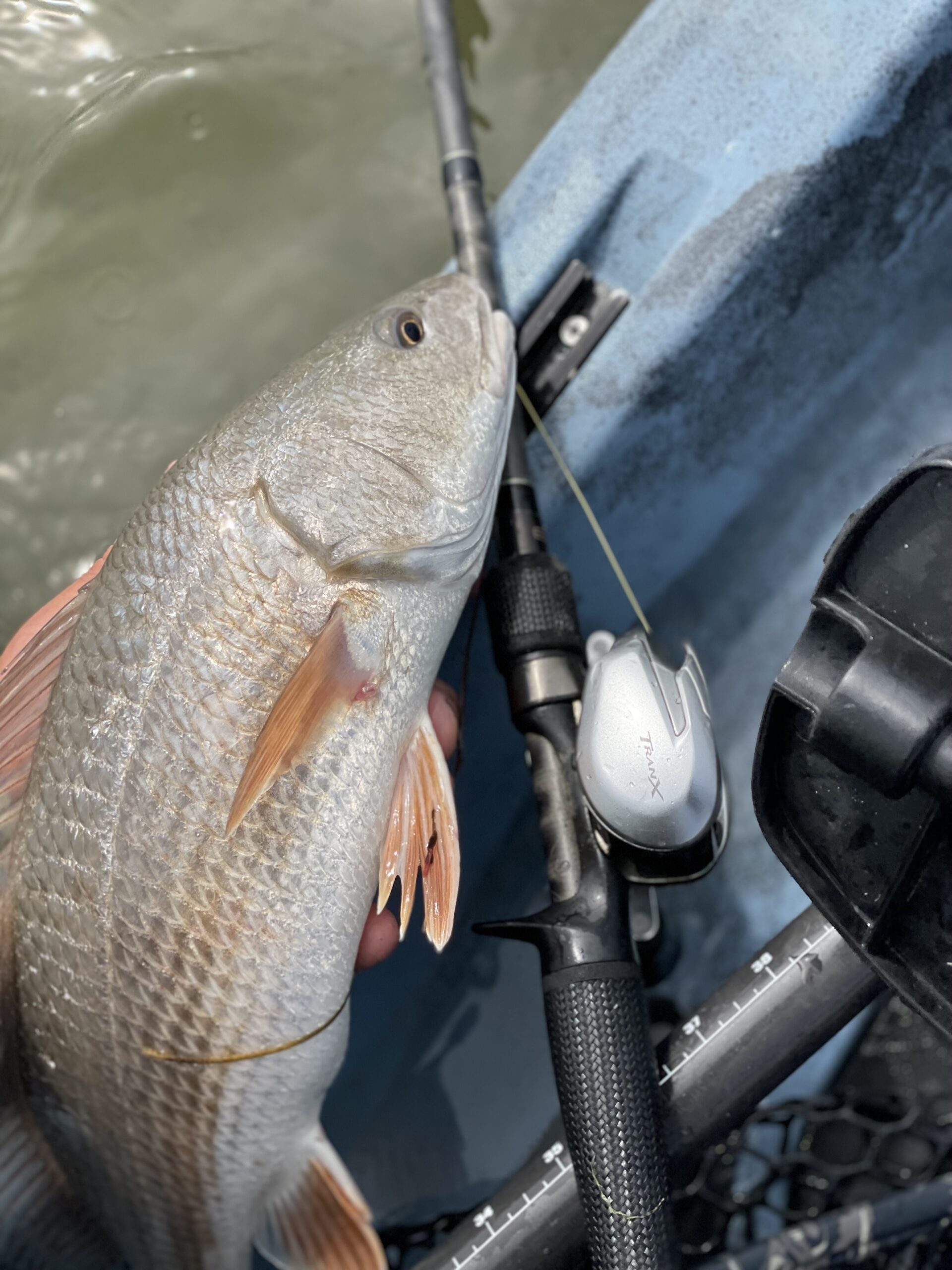
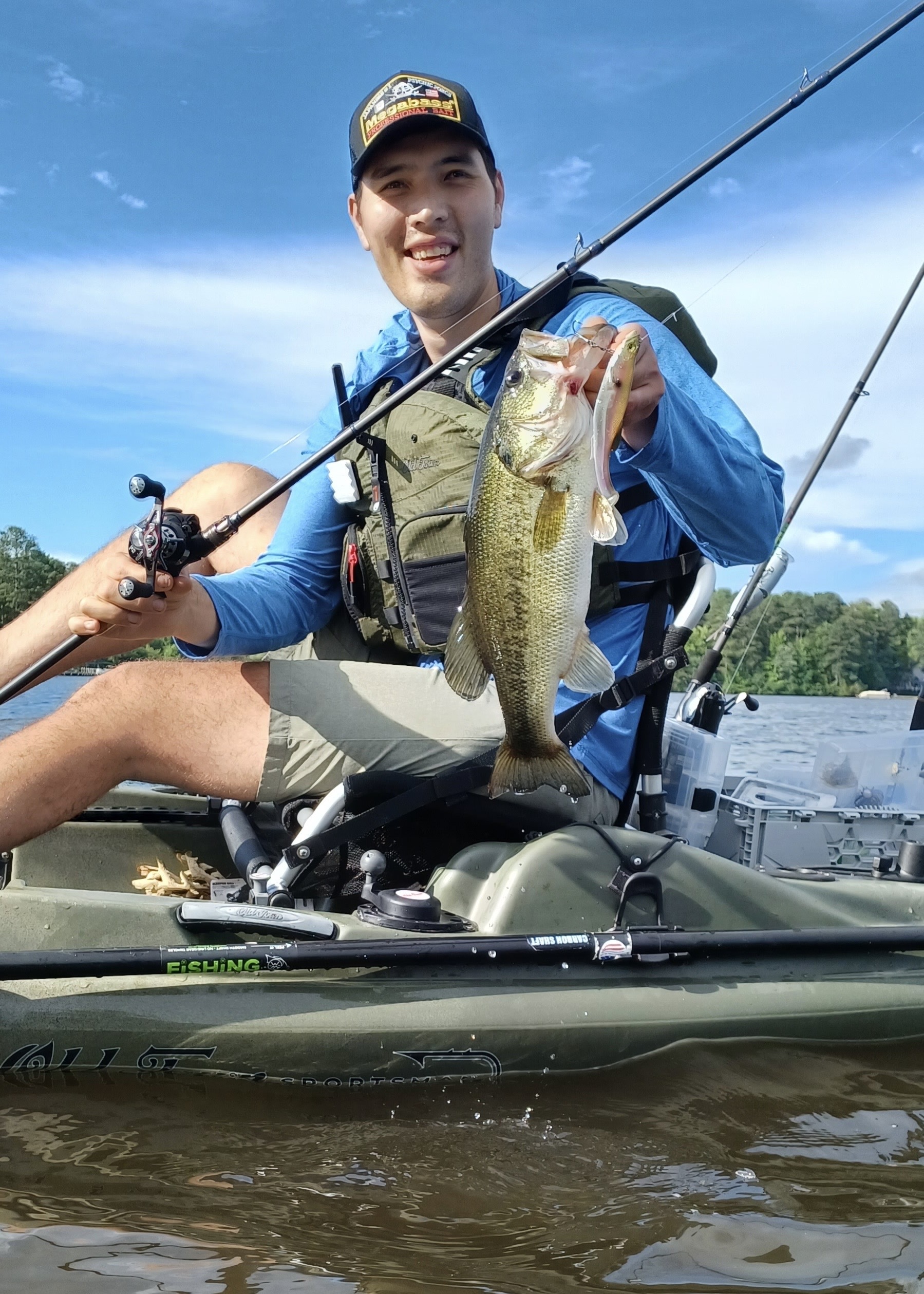
I’ve been testing the best baitcasting rods, reels, and combos this spring while fishing for bass, redfish, and striped bass. All the combos in this review feature a reel or full combo I’ve personally tested. I’ve also included my picks for rods and reels not sold as combos in case you want to build your own best baitcaster combo.
Best Baitcaster Combos: Reviews & Recommendations
Best Overall: Daiwa Tatula CT/Bass Pro Shops Johnny Morris Carbonlite 2.0 Baitcast Combo
Best Overall
Daiwa Tatula CT/Bass Pro Shops Johnny Morris Carbonlite 2.0 Baitcast Combo
Key Features Rod
- Powers: Medium light, medium, medium heavy, and heavy
- Actions: Moderate, fast, and extra fast
- Lengths: 6 feet, 6 inches to 7 feet, 6 inches
- Versatile Recommendation: 7-foot, medium heavy, fast
- Winn grips
- Fuji FaZlite guides
- 10-year warranty
Key Features Reel
- Gear Ratios: 6.3:1, 7.1:1, and 8.1:1
- Right or left retrieve
- Magforce-Z cast control
- Carbon drag with 13.2 pounds of force
Pros
- Comfortable grip
- Smooth reel with great ergonomics
- Reel can be tuned for bomb casts or to be backlash free
- Aluminum frame reel
Cons
- Some anglers don’t like split grips
The Daiwa Tatula CT sells for $150, and the Carbonlite 2.0 rod sells for $130, but you can buy the combo for $250, which saves you $30. That 11 percent savings is a nice bonus to get a great reel paired with a quality rod.
My Tatula CT has been on one of my frogging setups for several years, which is a hard life for any reel. Through lots of abuse, it’s been a reliable, smooth, and easy-to-cast reel that can bomb a frog and wrestle fish out of thick vegetation. I will finally this send it in for servicing this season so it can get cleaned up and lubed for another three years of frogging.
The rod is available from medium-light to heavy power in a wide range of lengths and actions. So whether you need a rod for throwing squarebills or jigs, there’s a combo available for you. If you’re looking for an all-around option, you can’t go wrong with the 7-foot, medium-heavy, fast rod with the 7:1:1 gear ratio reel.
Best Budget Combo for Bass: Bass Pro Shops Tourney Special
Best Budget Combo for Bass
Bass Pro Shops Tourney Special
Key Features Rod
- Powers: Medium or medium heavy
- Action: Fast
- Lengths: 6 feet, 6 inches or 7 feet
- Versatile Recommendation: 7-foot, medium heavy, fast
- Eva handle
- Stainless guides
- Graphite blank
Key Features Reel
- Gear Ratio: 6.6:1
- Right or left retrieve
- Five bearings
Pros
- Affordable
Cons
- Slow gear ratio isn’t ideal for moving baits
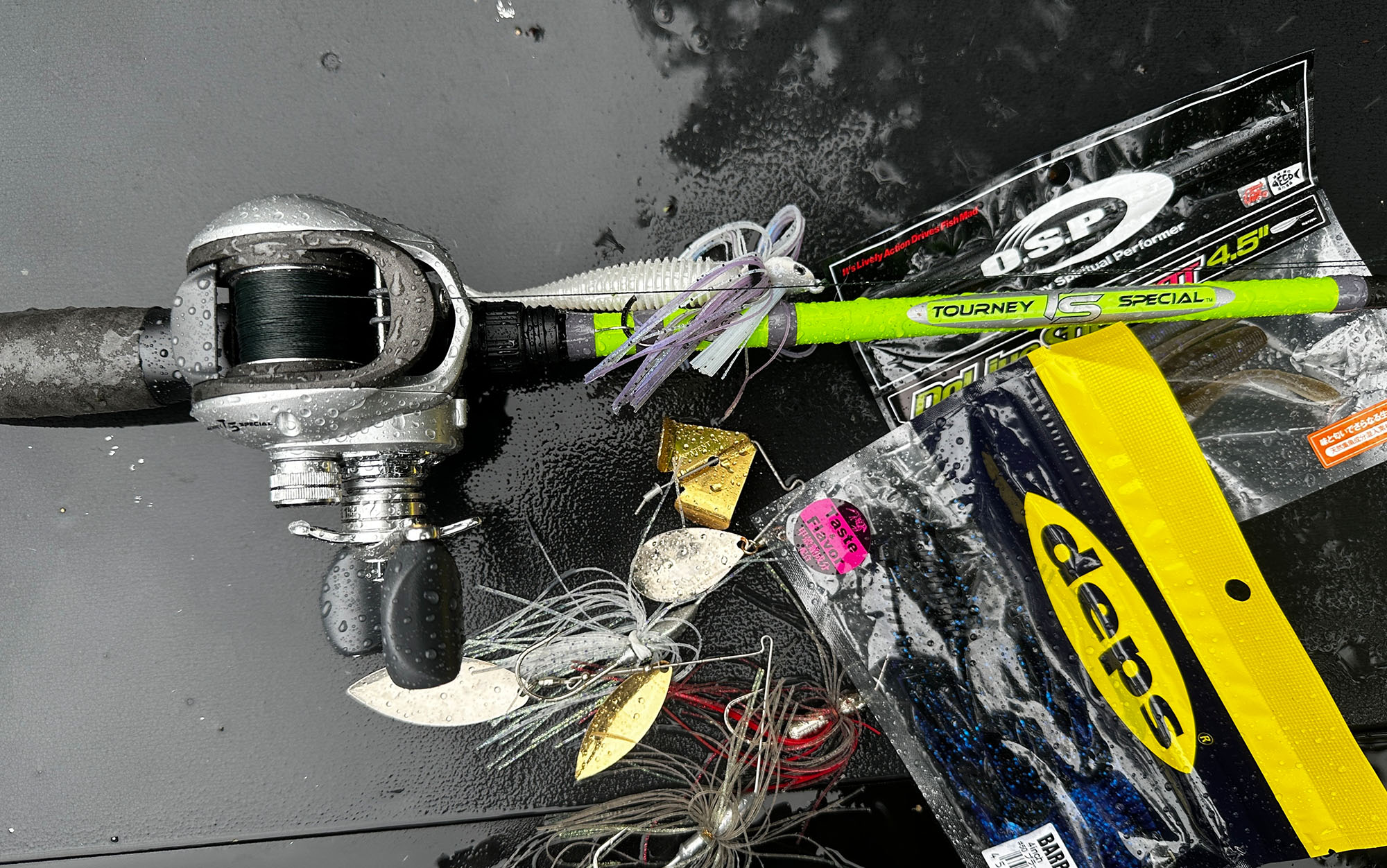
For under $100 you get a reel with a braking system that prevents backlashes and a rod that punches above its price point. It’s a heck of a deal for someone looking at getting their first baitcaster or adding to their existing arsenal.
I’ve been fishing the 6-foot, 6-inch, medium-heavy rod, and I’ve found it to be very accurate and easy to cast. The rod is specced for 3/8 to 1-ounce lures, and while that 1-ounce rating is ambitious, I find it perfect for 1/2-ounce jigs and spinnerbaits. Even though I have many rods that are five times the price of this combo, I still routinely take it out on my kayak because of its accuracy. It has quickly become one of my favorites for casting around docks and tight cover.
If you’re in the market for the best baitcaster combo for the money, this one is hard to beat.
Read Next: Best Bass Fishing Rods
Best Saltwater Combo: TackleDirect TDSSC701MHT Silver Hook/Shimano TRX300AHG TranX Baitcasting
Best Saltwater Combo
TackleDirect TDSSC701MHT Silver Hook/Shimano TRX300AHG TranX Baitcasting
Key Features Rod
- Power: Medium heavy
- Action: Moderate fast
- Length: 7 feet
- Lure Weight Rating: 3 to 6 ounces
- Cork handle with fighting butt
Key Features Reel
- 300 size
- Gear Ratio: 7.6:1
- Right or left retrieve
- Max Drag: 18 pounds
- Mono Capacity (pound/yards): 12/230, 14/180
- Braid Capacity (pound/yards): 40/195, 50/190
Pros
- Good for fishing bait and jigs
- Plenty of backbone
- Powerful and durable reel
Cons
- Not ideal for casting light lures
This combo isn’t for wading a flat and throwing jerkbait for speckled trout. This is a meat stick made for chunking bunker, diamond jigging, bouncing a bucktail, and pulling fish away from bridge pilings. The stout, but sensitive, rod is outfitted with a 300-size Shimano TranX. The power handle on the TranX is ideal for winching powerful fish away from structure or off the bottom. The TranX was a standout performer in this year’s saltwater baitcasting reel test, and I’ve been using a 400 size on my swimbait rod for the last few years. The reel is durable as a tank, with the weight and power of a muscle car.
Read Next: Best Saltwater Fishing Rods
Great Rods and Reels Not Sold as Combos
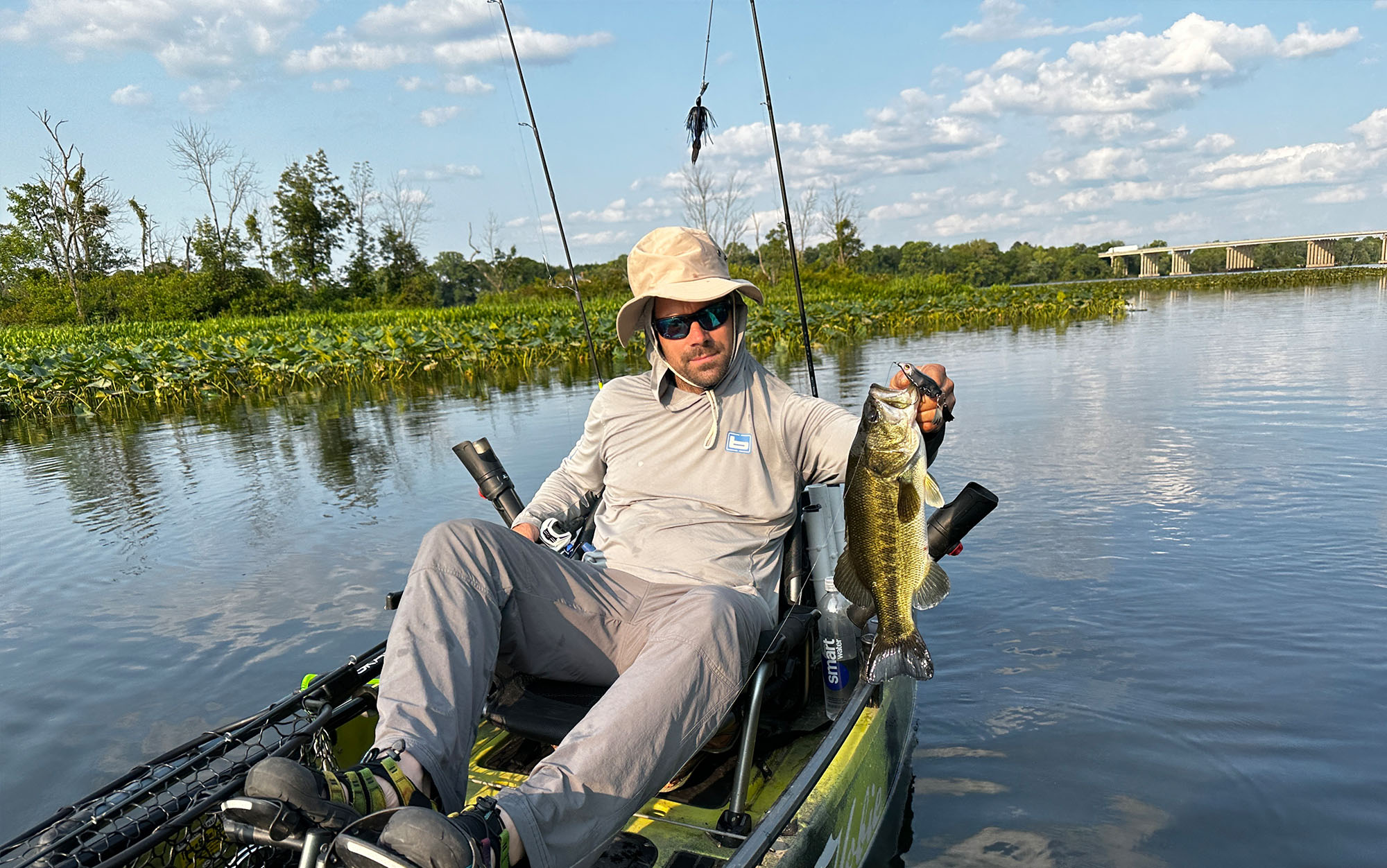
While you can save some money going with a packaged combo, choosing a rod and reel separately is the only way to create the ultimate setup for you. Here are some of my favorite combos:
High-End Bass: Megabass FMJ and Daiwa Steez A
High-end Bass
Megabass FMJ and Daiwa Steez A
The Megabass FMJ is a do-everything jig and worm rod with crisp sensitivity and refined finishing. I’ve used mine to throw swim jigs, chatterbaits, and Texas-rigged plastics from ⅜ to ¾ ounce. The Daiwa Steez SV TW ($550) was an indulgent purchase on my end, but one I haven’t regretted. Fishing that reel is pure luxury, and I just wish I could afford a few more.
Value Bass: Shimano SLX DC and Shimano SLX A Rod
Value Bass
Shimano SLX DC and Shimano SLX A Rod
The SLX DC has Shimano’s micro-computer technology that prevents backlashes and makes a cool sound when you cast it. Paired with one of the SLX rods, you have a combo that will run you $300, and fish circles around combos costing much more.
Inshore: Daiwa Coastal and Shimano GLF
Inshore
Daiwa Coastal and Shimano GLF
I’m sure you gasped when you saw a Daiwa and Shimano paired together, but that’s the beauty of building your own combo. You can choose the best reel and the best rod for your needs. The Coastal is the saltwater Tatula, and a solid reel for inshore fishing. The GLF offers a ton of performance for the dollar and, after using it all this year, has become one of my top recommendations for affordable, inshore casting rods.
BFS: Shimano Curado BFS and Dobyns Sierra Ultra Finesse
BFS
Shimano Curado BFS and Dobyns Sierra Ultra Finesse
From bug baits to Ned rigs, this setup will toss them all. It’s the combo I grab when I need the insurance of finesse presentations, but don’t want to bring a spinning rod.

Big Swimbait: Daiwa Tatula 300 and Leviathan Omega
Big Swimbait
Daiwa Tatula 300 and Leviathan Omega
There are a lot of great big swimbait rods and reels, but if I had to choose one for hard baits, it would be this setup.
How to Choose a Baitcasting Combo
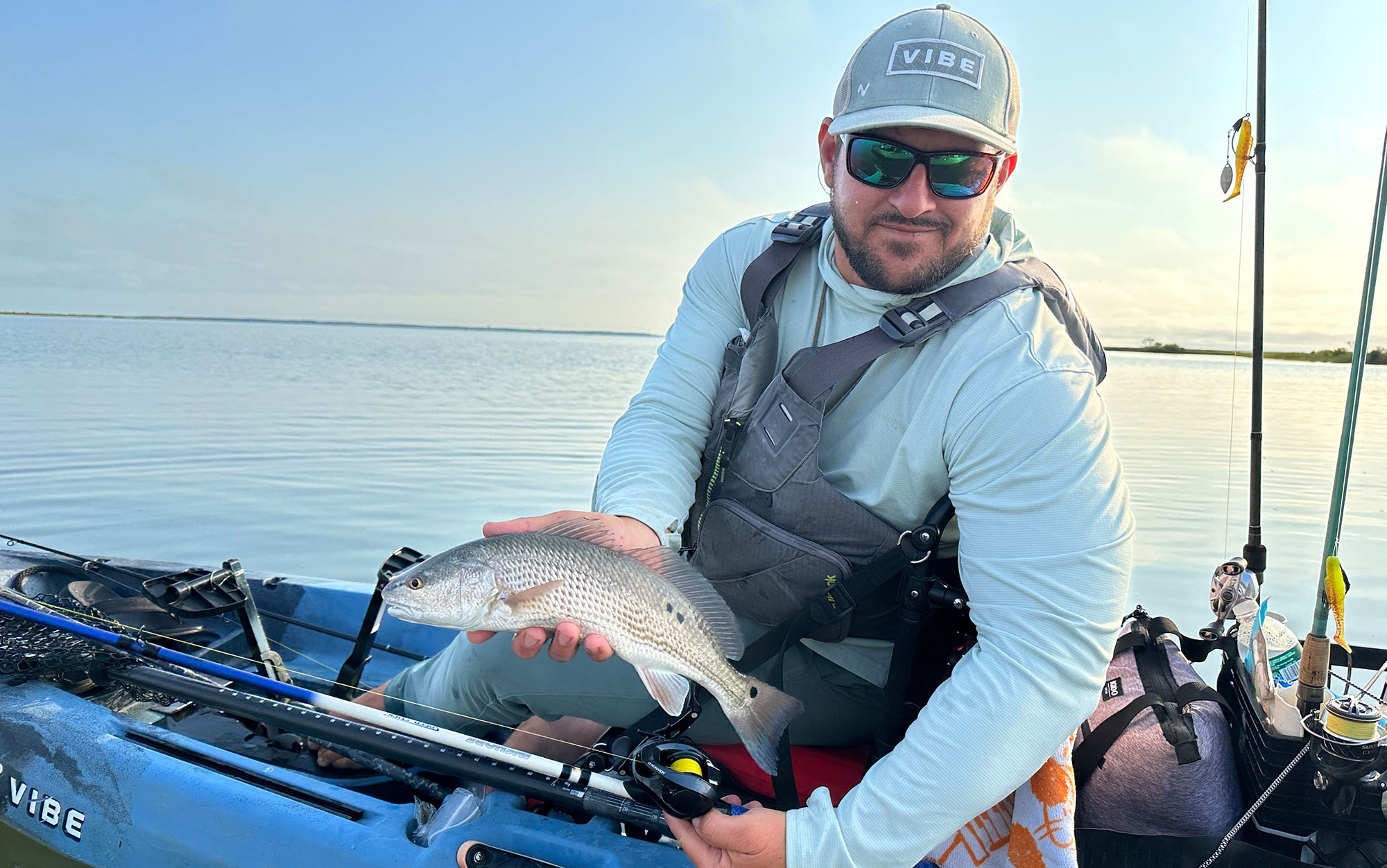
I’m going to make the assumption that if you’re in the market for a baitcasting combo you’re relatively new to baitcasters. So here’s a breakdown of the basics in selecting a rod and reel for your needs.
Rod Power
Rod power refers to overall stiffness, which translates to the lure weights a rod can cast. You’ll see these most commonly as light, medium-light, medium, medium-heavy, and heavy power. The most universal power is medium heavy because it’s great for a wide variety of bass and inshore presentations. But if you’re mostly casting light lures you’ll want a medium or medium light rod. If you’re fishing heavy lures or heavy line, a heavy power rod is ideal.
Actions
A rod’s action is how it bends. A fast action will have a flexible tip section, and be stiffer throughout the rest of the rod. A moderate action has a more parabolic action that bends through the middle of the rod. Typically, a fast action is ideal for bottom contact fishing like worms and jigs because they’re sensitive and can drive powerful hook sets. A moderate action is best for something like a crankbait that needs a forgiving rod that prevents pulling treble hooks out of a fish’s mouth.
Gear Ratios
A reel’s gear ratio refers to how many times the spool turns for each turn of the reel handle. A 7.1:1 gear ratio means the spool makes 7.1 rotations for each rotation of the handle.
The trend in baitcasting reels is toward faster and faster retrieval rates. Where a 6.3:1 used to be an all-around option, it’s now considered slow. The 7.1:1 has taken over as the do-everything ratio, and 8.1:1 is the choice for powerfishing.
Right or Left Retrieve
While some anglers will tell you there’s a right or wrong answer to this selection, there’s not. It truly comes down to personal preference. For example, I’m right-handed and cast a baitcaster with my right hand on the reel. As the lure hits the water, I move the rod over to my left hand and crank the handle with my right hand.
I know that seems like an overly complicated system, but it’s not uncommon. If casting with my right and retrieving with my left felt natural, believe me, I would do it. I would suggest trying to retrieve with your non-dominant hand to start because it is more efficient, but if it doesn’t feel natural, don’t fight your fate.
Read Next: Best Bass Lures
Tips for Using a Baitcaster

The biggest fear for new baitcaster owners is the dreaded backlash where your reel becomes a tangled bird’s nest. It sucks the fun right out of fishing. But you can greatly reduce the chances of backlash by following these tips.
Learn to use your reel’s braking and spool tensioning system. High-end baitcaster have adjustable brake and spool tension, but even budget baitcasters have knobs that allow you to adjust the spool tension for your lure weight.
If your reel has an adjustable braking system, I’d recommend adjusting it on the conservative side, which will reduce casting distance, but prevent backlashes. A good rule of thumb for a new caster is to tighten the spool tension knob until the lure slowly falls to the ground with an open bail.
If you’re spooling your reel up with a braided fishing line, be sure to use backing. By adding a few yards of monofilament to the spool before the braid, you’ll give the braid something to bite into and prevent slipping.
You can use electrical tape to prevent deep, day-ending backlashes. Pull a cast length plus a little more of line out. Then take a few inches of electrical tape and wrap it around your spool. Reel up the line you pulled out. Here’s a video on how to do it if you’re a visual learner.
FAQs
Fluoro has come a long way, and modern lines are nimble, low memory, and low stretch. They’re an all-around great option for baitcasting reels. The exception is for topwater fishing where mono is better because it floats. Braid is ideal for fishing in thick vegetation.
Baitcasters in the $100 to $200 range offer a lot of performance for the money.
Twenty-pound fluorocarbon or 65-pound braid are good all-around line weights for 150-size baitcasting reels.
Final Thoughts on Baitcaster Combos
Buying one of the best baitcaster combos is a great way to get started and save a few bucks. With practice, they’ll allow you to cast more accurately than a spinning rod, and many anglers prefer baitcasting ergonomics. If you’re on a budget, I can’t recommend the Bass Pro Shops Tourney Special enough. If you’re looking for something that will last a little longer and be more refined, the Daiwa Tatula CT/Bass Pro Shops Johnny Morris Carbonlite 2.0 Baitcast Combo is my top choice.
- Best Overall: Daiwa Tatula CT/Bass Pro Shops Johnny Morris Carbonlite 2.0 Baitcast Combo
- Best Budget Combo for Bass: Bass Pro Shops Tourney Special
- Best Saltwater Combo: TackleDirect TDSSC701MHT Silver Hook/Shimano TRX300AHG TranX Baitcasting
